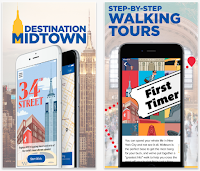 |
| Screen shot only. The full video is embedded below. |
I have never been to the Philippines, or had any real interest in visiting that land of many islands. After watching this new documentary from the New York Times, I have even less interest in going there. As a subscriber to the online NYTimes, I have been following with growing feelings of horror, the brutal slaughter of thousands of that nation's poorest citizens, who have been targeted because they are either drug dealers or drug users.
Some of the victims of President Duterte's 'war on drugs' have almost certainly been the victims of false accusations by people bearing grudges, while other have been innocent people who just happened to be in the wrong place at the wrong time. At almost 15-minutes, this short documentary provides shocking proof of what can happen to sane and civil societies everywhere, when police and other thugs, hiding behind a presidential decree are able to brazenly flout the rule of law.
Below I include in full, the email I received today from the New York Times, and Andrew Glazer, the Senior Story Producer for the Times. Be warned however, that the film contains footage of violent death, grief, and graphic violence. You will need to decide for yourself if you want to visit the Philippines after viewing this film. For myself, I know I will never visit there.
When a President Says, ‘I’ll Kill You’
By Andrew Glazer and Jeremy Rocklin
Dear Subscriber,
My name is Andrew Glazer, and I’m a video journalist for The Times. My colleagues and I have been working hard to bring you the documentary “When a President Says, ‘I’ll Kill You.’ ” I invite you, a valued subscriber, to take a look.
The film will bring you to the front lines of a deadly campaign led by Philippine President Rodrigo Duterte. He’s called for police and vigilantes to kill drug suspects and pushers; and the official death toll since he took office last summer has reached at least 3,600 — but the actual number is probably much greater. Most of those killed were poor and living in slums. Few of the killings have been investigated.
A corps of local journalists has worked tirelessly to document the killings and the survivors to highlight their humanity. One, photographer Raffy Lerma of the Philippine Daily Inquirer, is a subject of our documentary. He’ll bring you, the viewer, along as he rushes from crime scene to wake to funeral. You’ll not only see the brutality of their demise but also the desperation and grief of their families. And you’ll hear from the top drug enforcement officials who justify the draconian campaign.
Putting this together was a team effort. I worked with two talented Manila-based journalists — cameraman/producer Carsten Stormer and co-producer Yasmin Coles — and film editor Jeremy Rocklin and director of enterprise Liz Baylen. And, of course, you, who helped fund this effort with your subscription.
On behalf of the 50 journalists on The Times video desk, I want to thank you for your support. I hope you continue to explore more of our video journalism in the weeks ahead. We do this for you.
Andrew Glazer
Senior Story Producer, The New York Times
Addendum: After adding this post today, and reviewing my introduction to the email and the video, I realised that some readers may think I am ignoring the problem of drugs in society. Any society. I am not. I am well aware of the pain and suffering drugs inflict on the users, their families and friends, and society at large. This however does not excuse the blatant disregard for the rule of law that is now underway in Manila. Laws are there for a reason, as are courts, judges, and prisons. Use them.





















